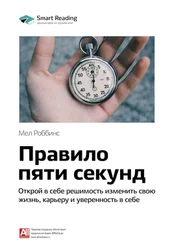Обращайте внимание на правила форматирования текста, читая книги. Этим правилам подчиняются практически все романы. Единственное исключение составляют шрифты – готовя книгу к печати, издатель обычно сам определяет шрифтовое решение.
Приложение Е. Разбор романа «Дом на улице Манго»
В главе 7 «Структурируйте свою историю» мы обсуждали сюжет романа Сандры Сиснерос «Дом на улице Манго». А теперь мы разберем его подробно, сцена за сценой. Мы увидим, как сцены составляют сюжет книги, и постараемся понять, где Сиснерос использовала впечатления собственной жизни.
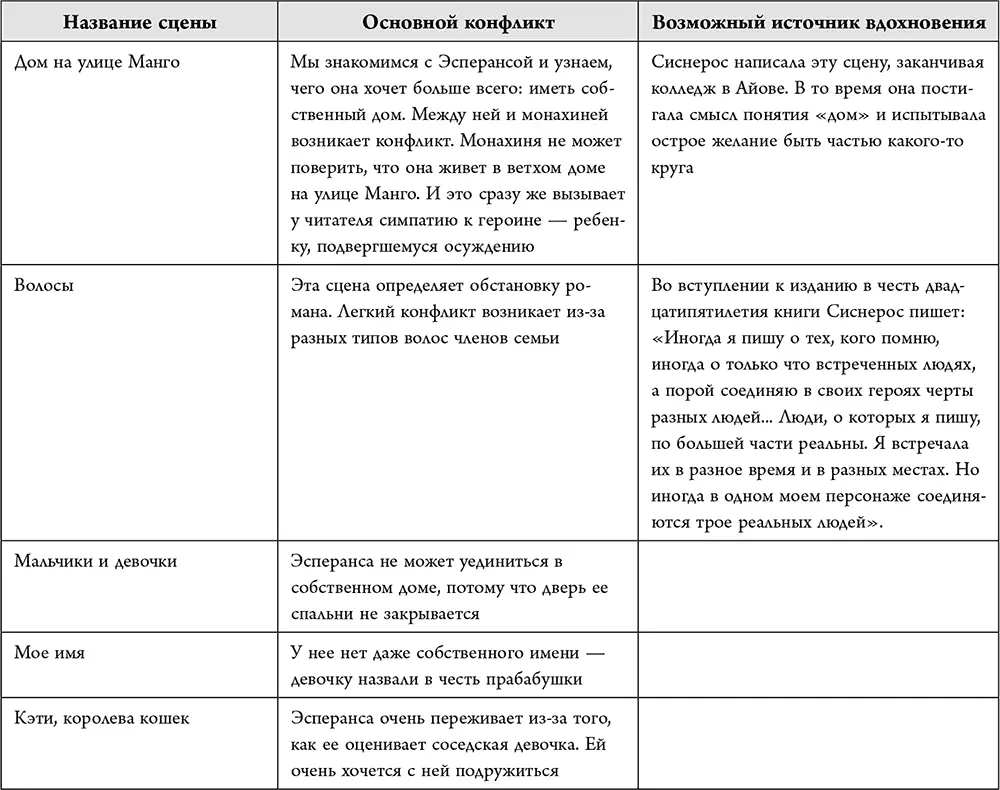

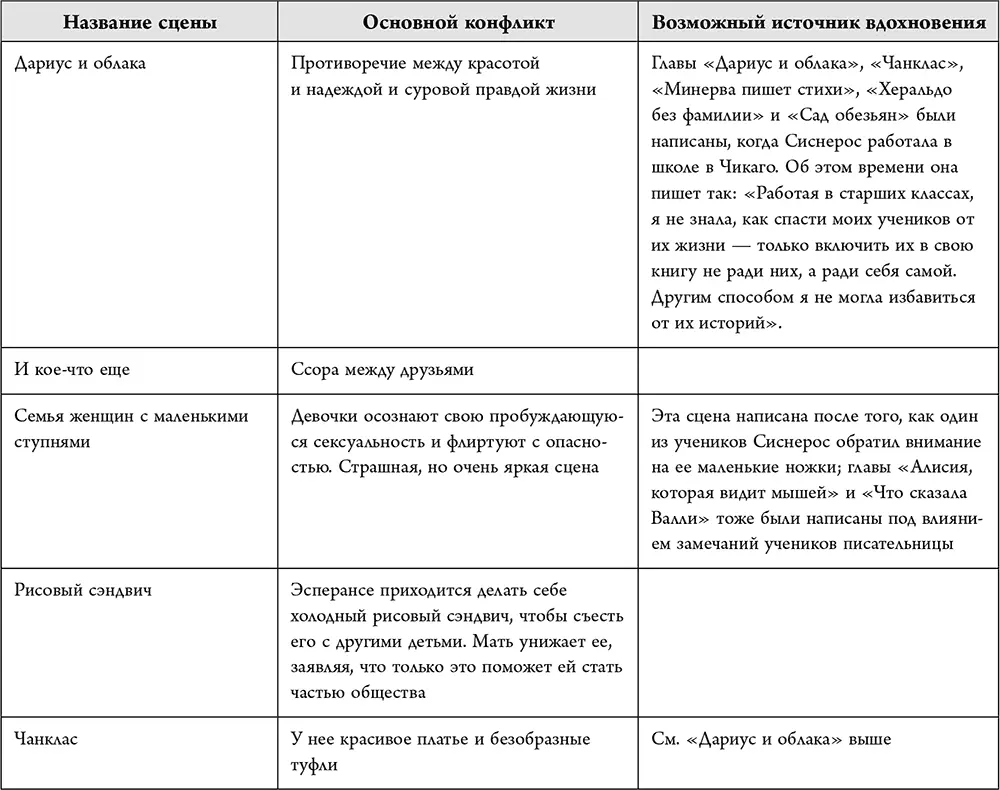
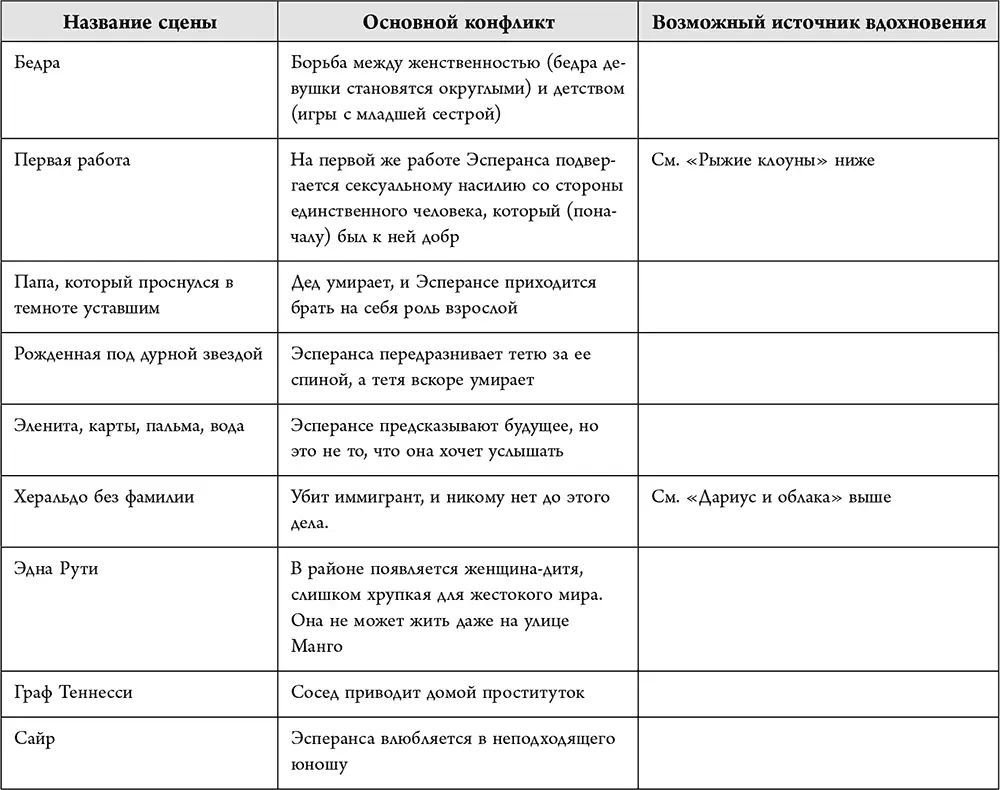
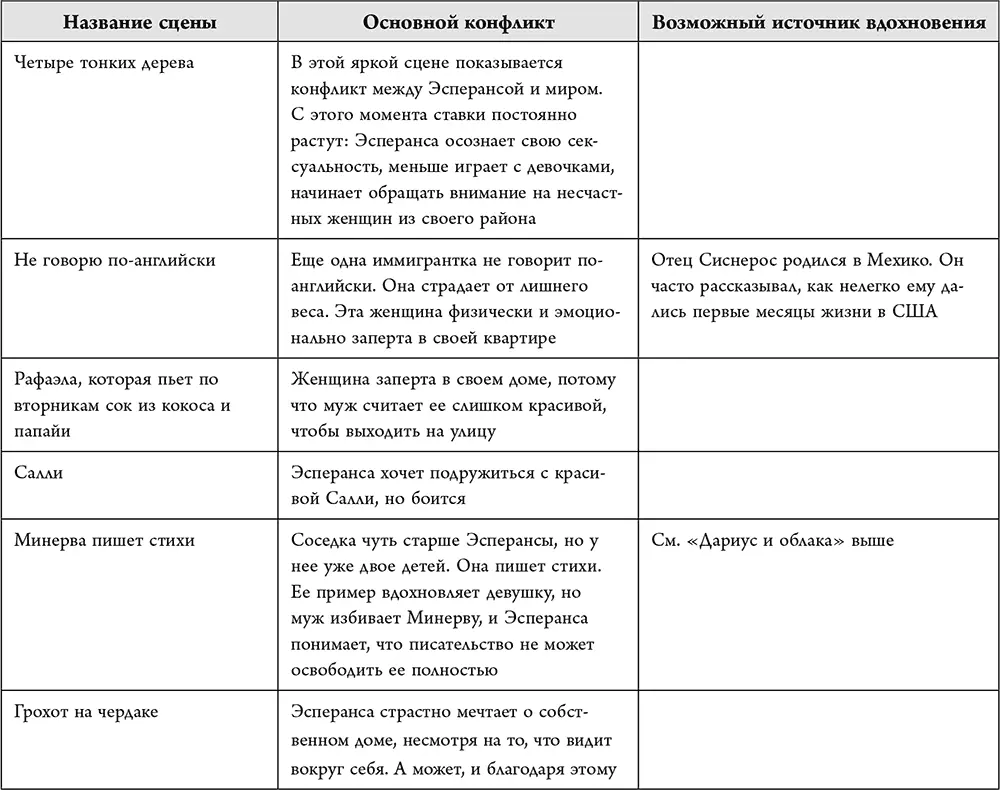
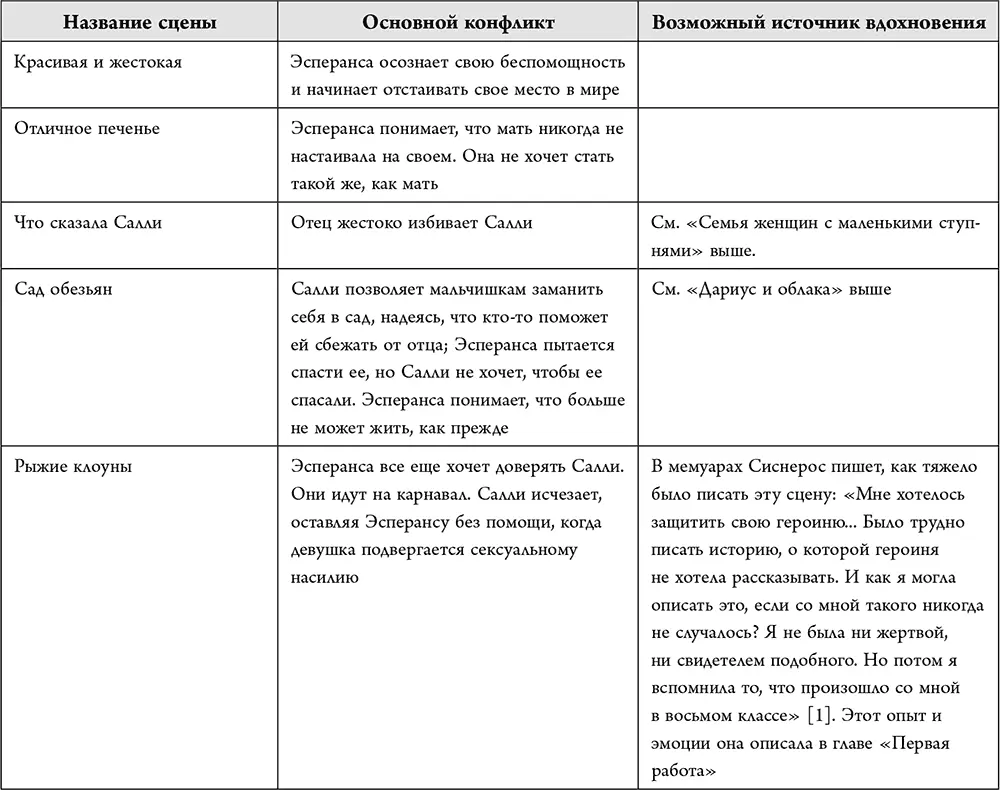
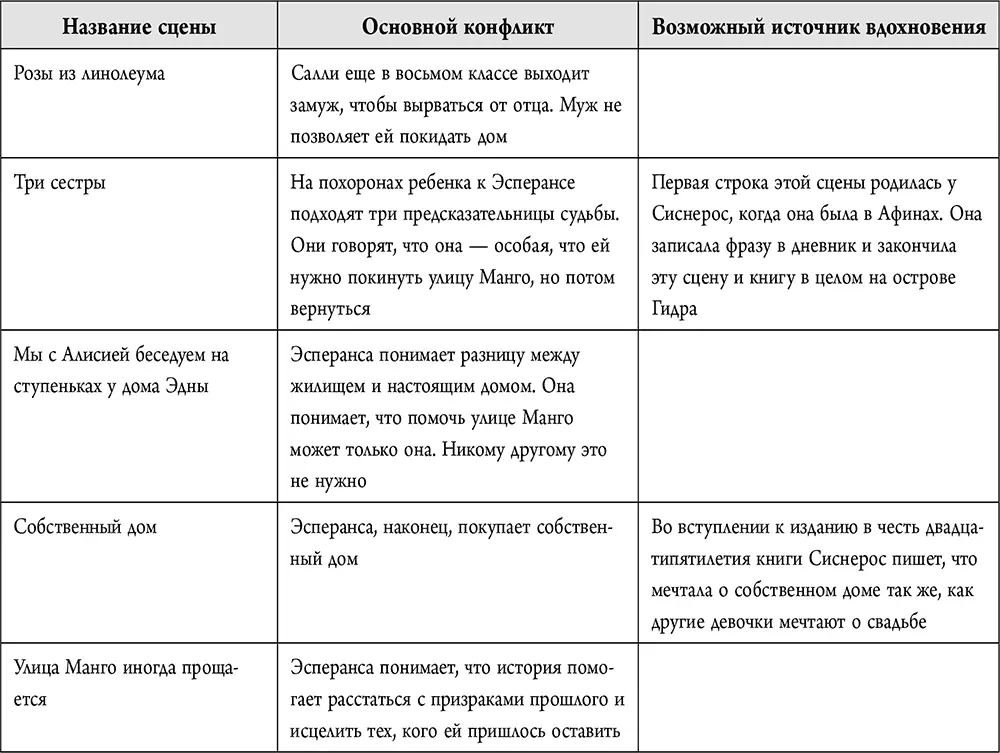
Приложение F. Шаблон романа
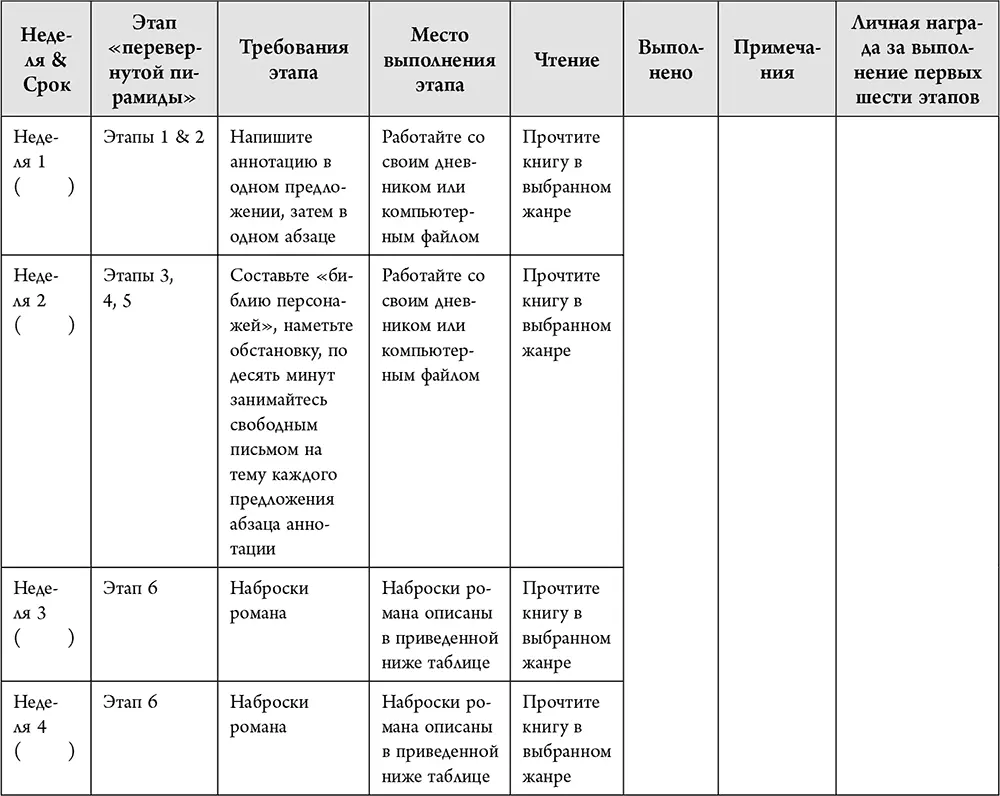
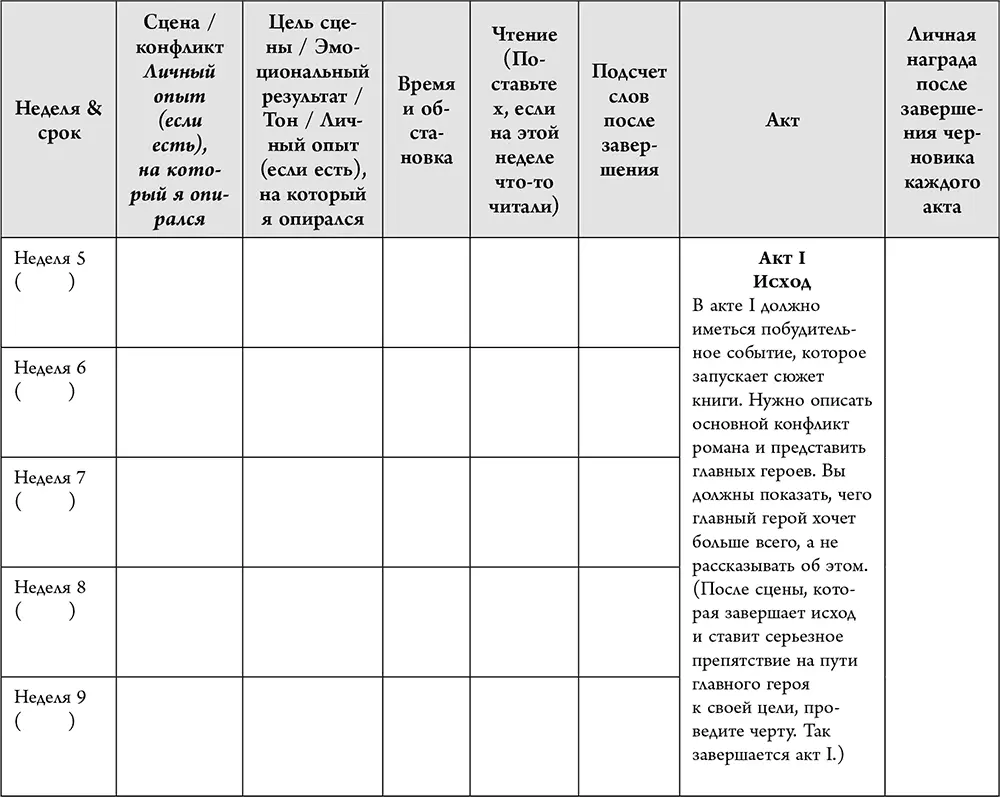
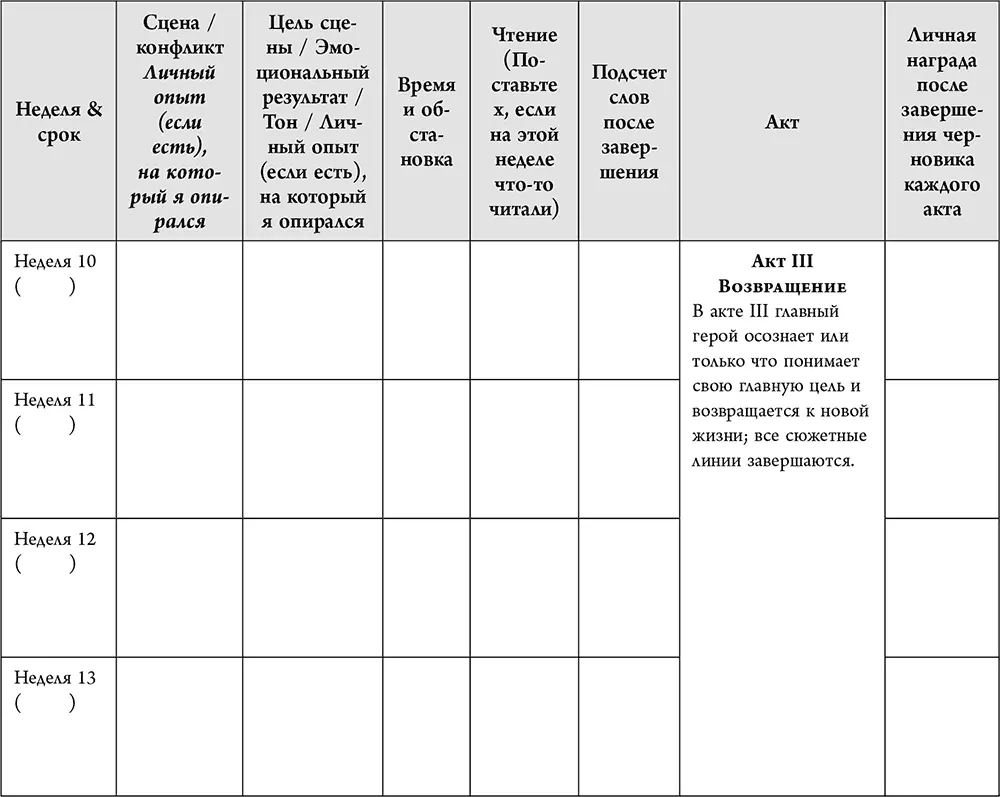
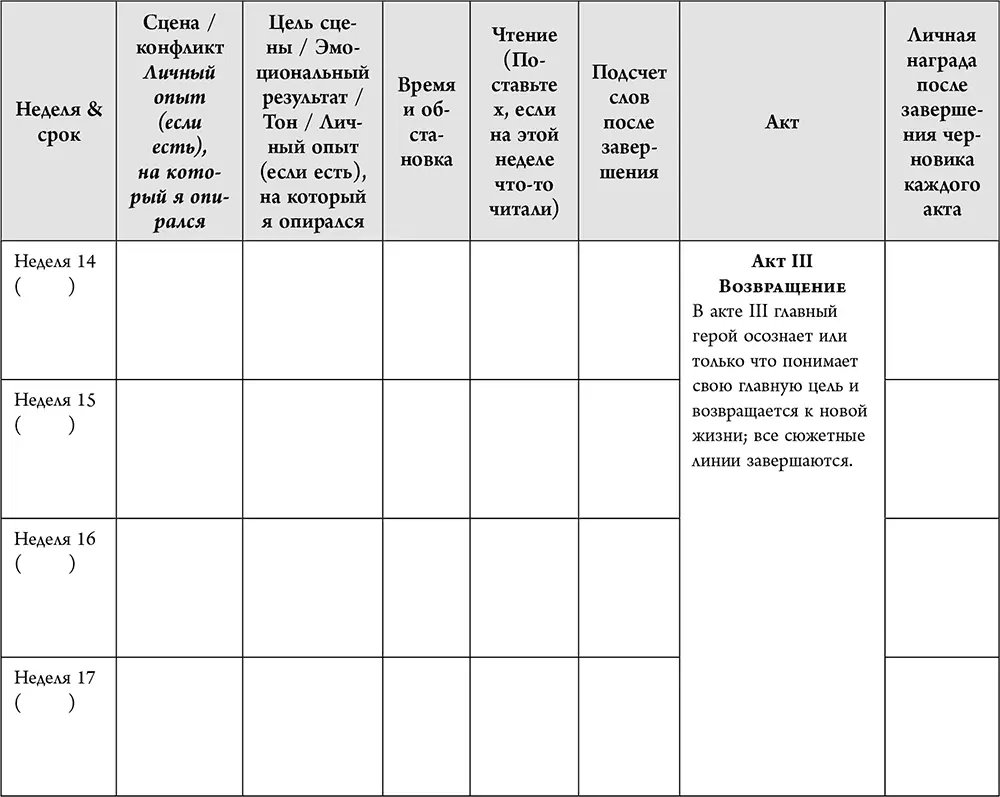
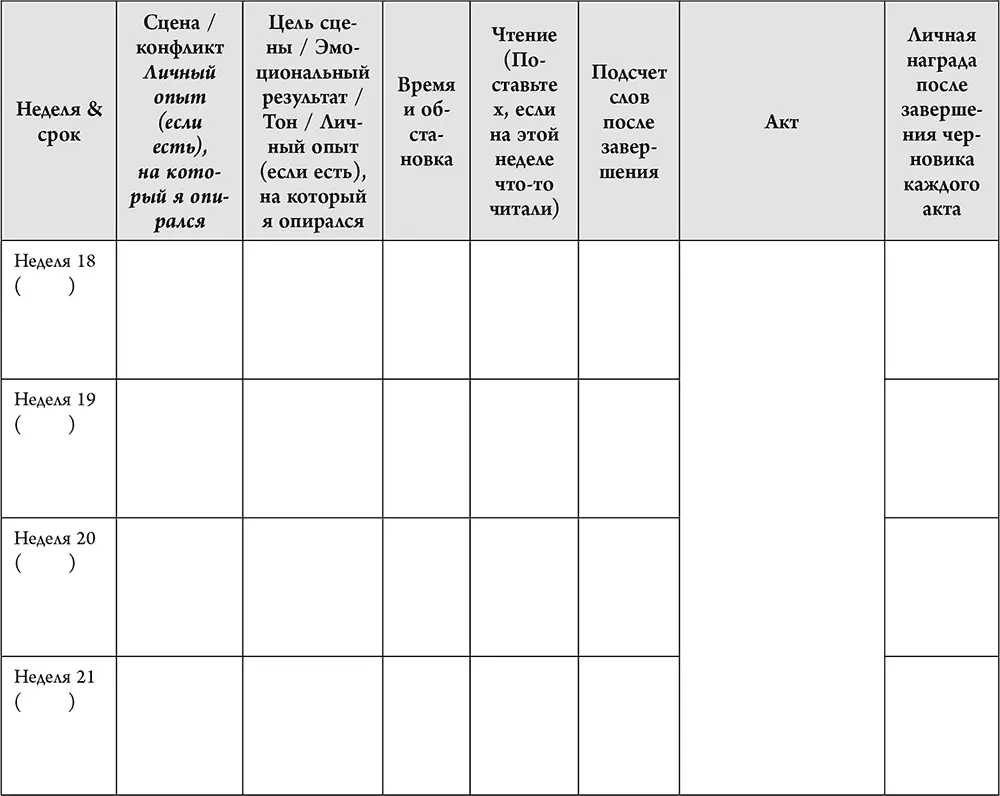
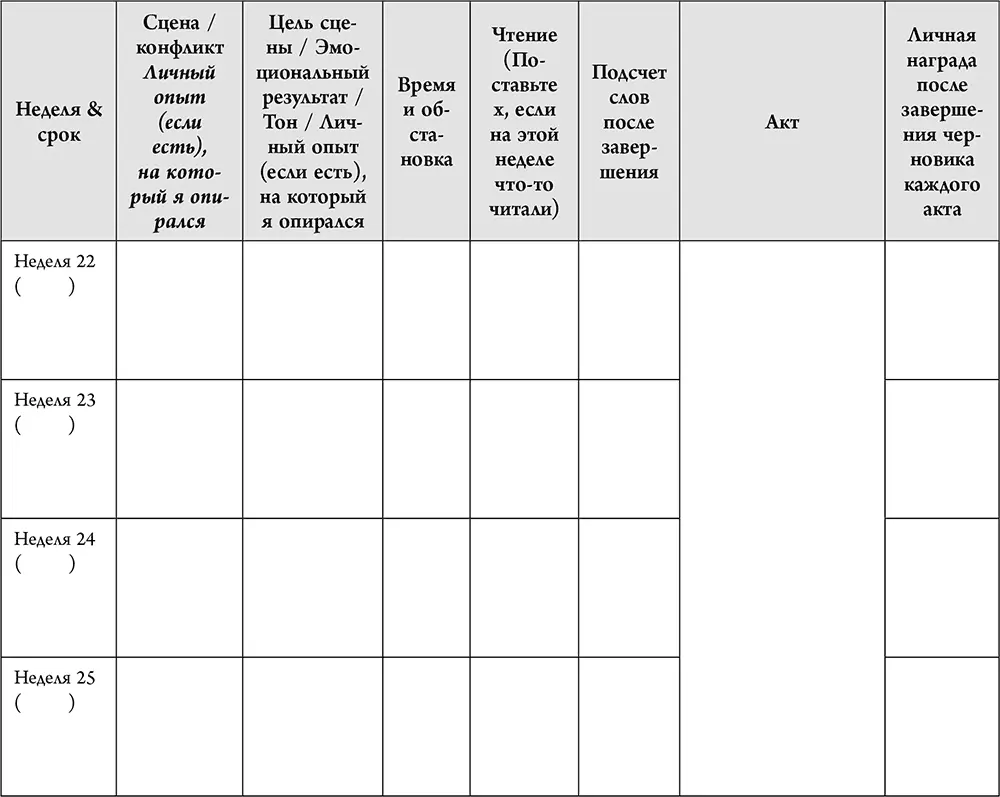
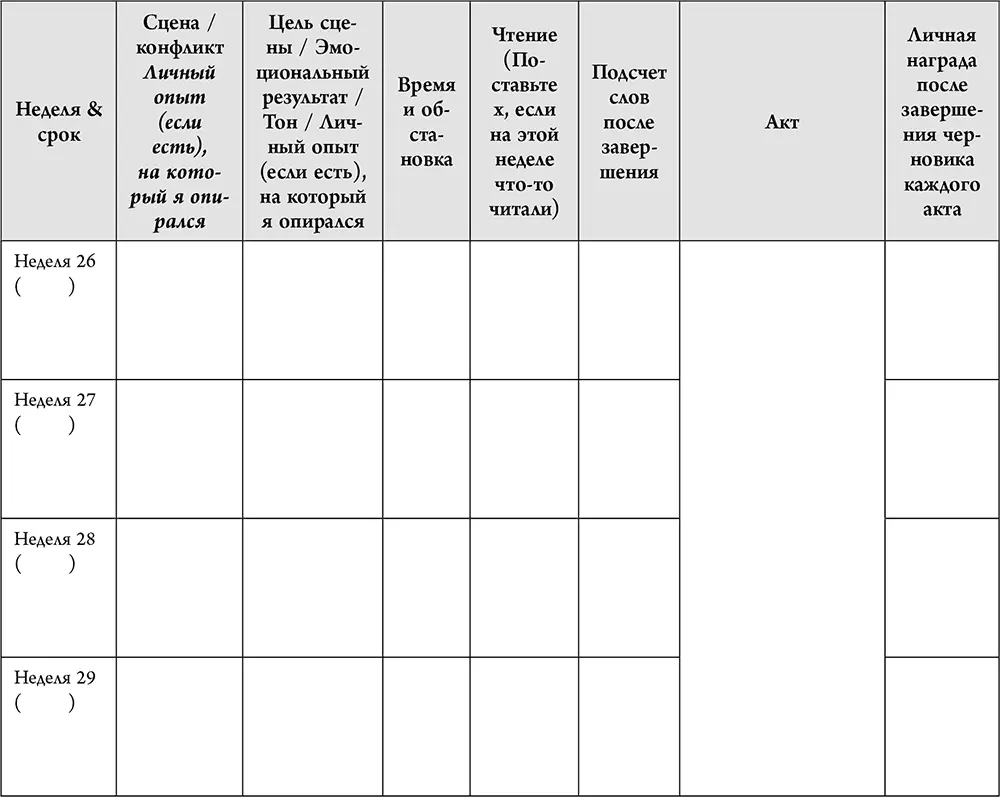
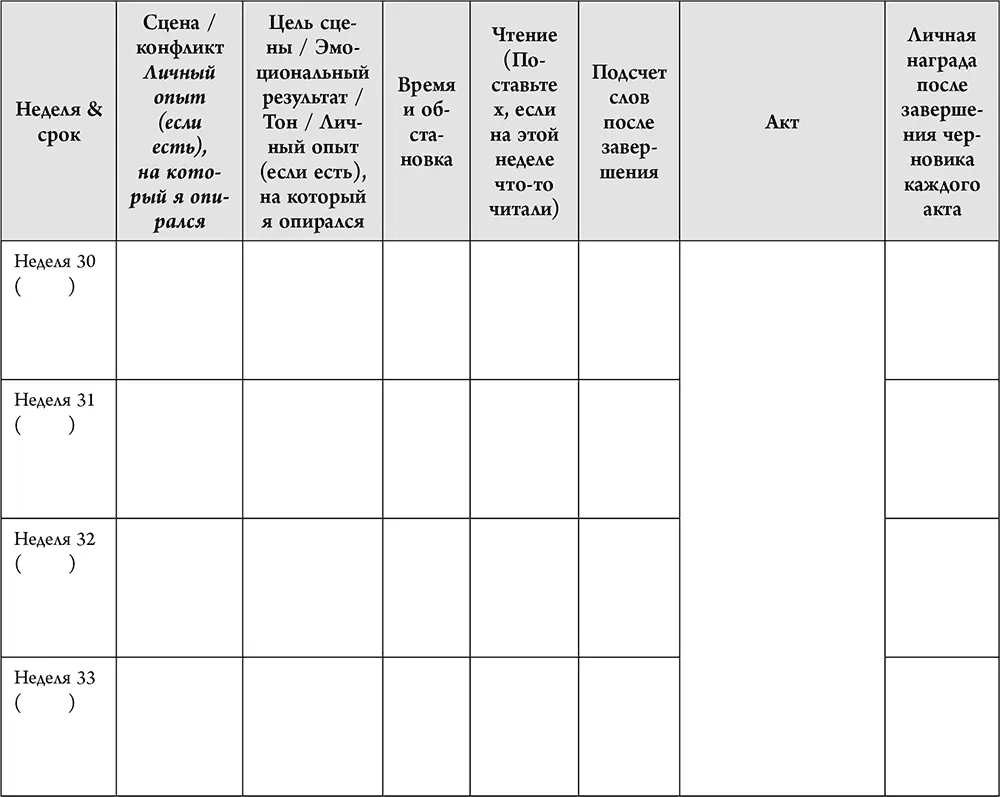
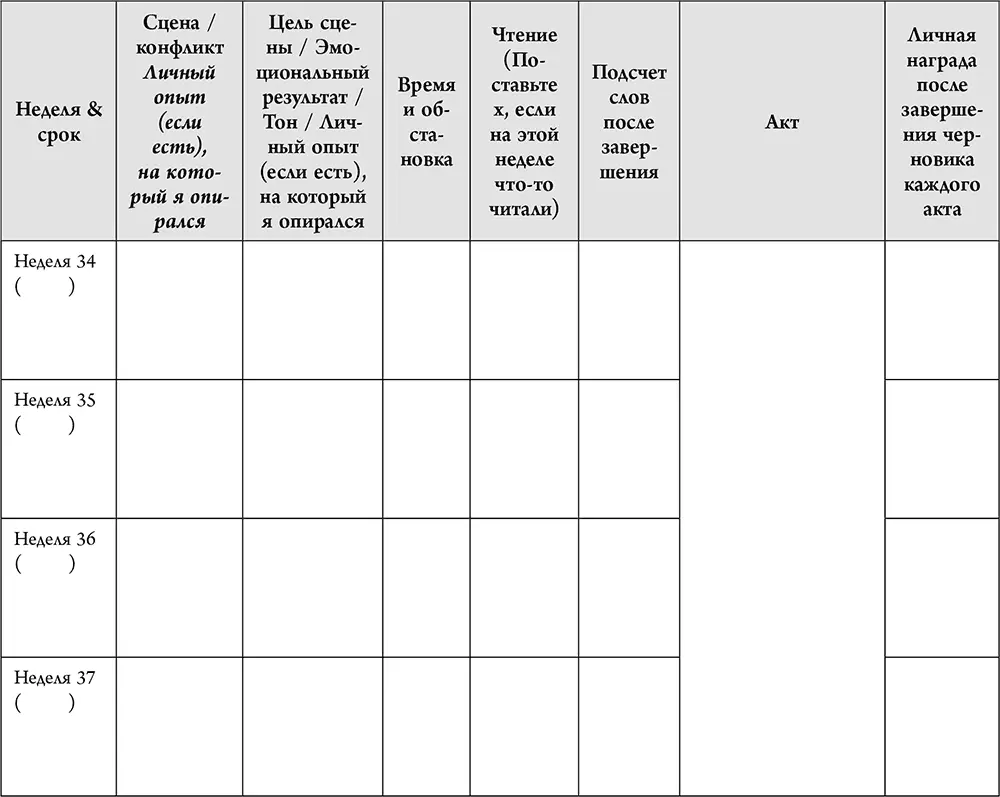
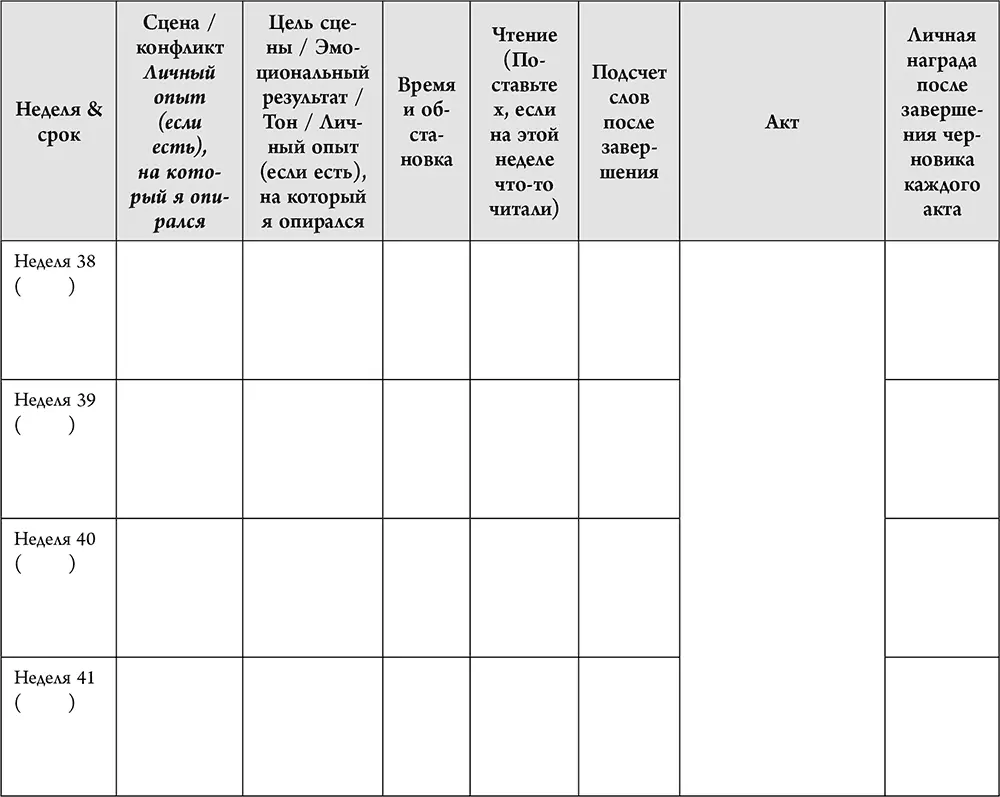
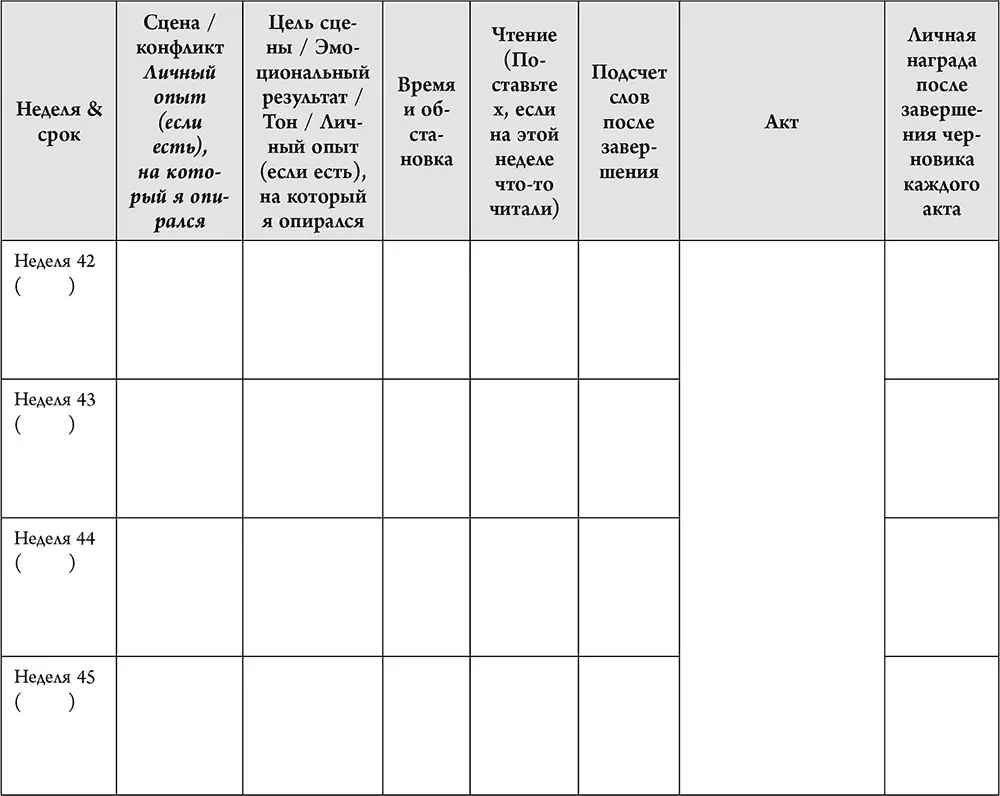


1. Brashares, H. J., & Catanzaro, S. J. (1994). Mood regulation expectancies, coping responses, depression, and sense of burden in female caregivers of Alzheimer’s patients. Journal of Nervous and Mental Disease, 182 , 437–442.
2. Esterling, B. A., Antoni, M. H., Kumar, M., & Schneiderman, N. (1990). Emotional repression, stress disclosure responses, and Epstein-Barr viral capsid antigen titers. Psychosomatic Medicine, 52 (4), 397–410.
3. Greenberg, M. A., Wortman, C. B., & Stone, A. A. (1996). Emotional expression and physical health: Revising traumatic memories or fostering selfregulation? Journal of Personality and Social Psychology, 71 (3), 588–602.
4. Klein, K., & Boals, A. (2001). Expressive writing can increase working memory capacity. Journal of Experimental Psychology: General, 130 , 520–533.
5. Lepore, S. J., & Greenberg, M. A. (2002). Mending broken hearts: Effects of expressive writing on mood, cognitive processing, social adjustment, and health following a relationship breakup. Psychology and Health, 17 (5), 547–560.
6. Lepore, S. J., & Smyth, J. M. (eds.). (2002). The writing cure: How expressive writing promotes healing and emotional well-being . Washington, DC: American Psychological Association.
7. Norman, S. A., Lumley, M. A., Dooley, J. A., et al. (2004). For whom does it work? Moderators of the effects of writ en emotional disclosure in a randomized trial among women with chronic pelvic pain. Psychosomatic Medicine, 66 , 174–183.
8. Petersen, S., Bull, C., Propst, O., Det inger, S., & Detwiler, L. (2005). Narrative therapy to prevent illness-related stress disorder . Journal of Counseling and Development, 83(1), 41–47.
9. Petrie, K. J., Fontanilla, I., T omas, M. G., et al. (2004). Effect of writ en emotional expression on immune function in patients with Human Immunodef ciency Virus infection. A randomized trial. Psychosomatic Medicine, 66 , 272–275.
10. Scot, V. B., Robare, R. D., Raines, D. B., et al. (2003). Emotive writing moderates the relationship between mood awareness and athletic performance in collegiate tennis players. North American Journal of Psychology, 5 , 311–324.
11. Smyth, J. M., Stone, A. A., Hurewitz, A., & Kell, A. (1999). Effects of writing about stressful experiences on symptom reduction in patients with asthma or rheumatoid arthritis . Journal of the American Medical Association, 281 , 1304–1329.
12. Smyth, J. M., True, N., & Souto, J. (2001). Effects of writing about traumatic experiences: The necessity of narrative structuring. Journal of Social and Clinical Psychology, 20 , 161–172.
13. Ussher, J. M., Hunter, M., & Cariss, M. (2002). A woman-centred psychological intervention for premenstrual symptoms, drawing on cognitivebehavioural and narrative therapy. Clinical Psychology and Psychotherapy, 9 (5), 319–331.
Читать дальше
Конец ознакомительного отрывка
Купить книгу

























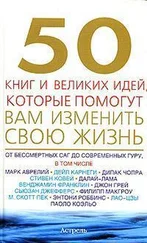
![Билл О'Хэнлон - Действуй иначе! [Десять элементарных способов изменить свою жизнь к лучшему]](/books/393885/bill-o-henlon-dejstvuj-inache-desyat-elementarnyh-thumb.webp)

